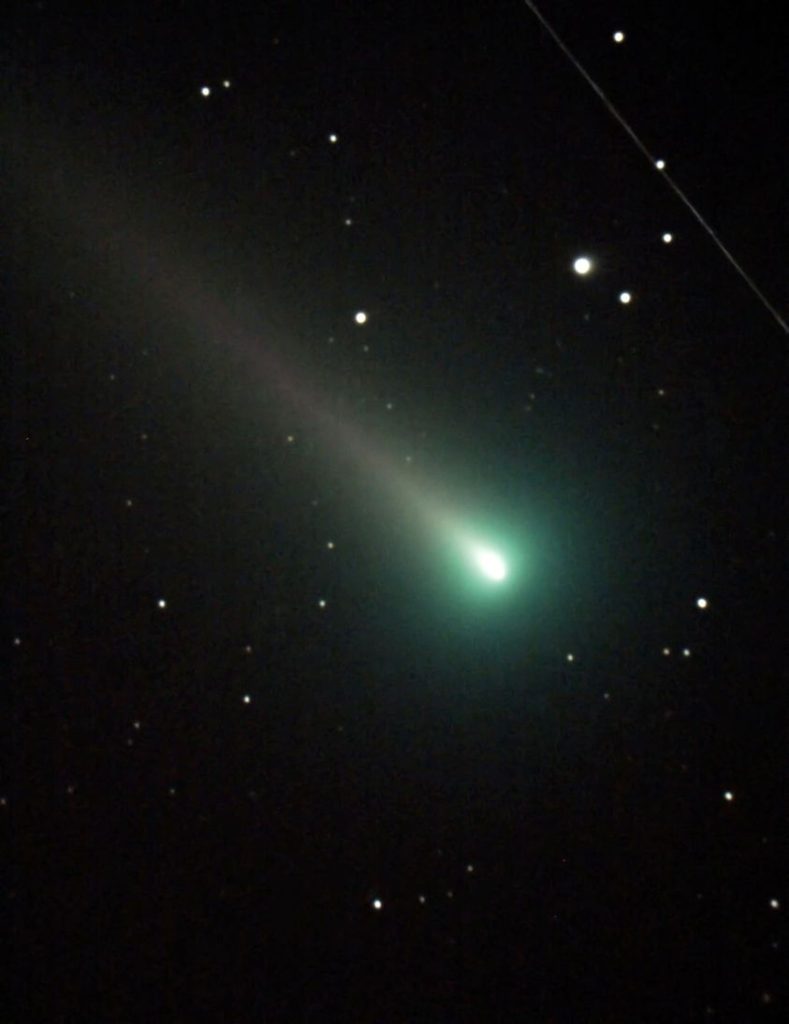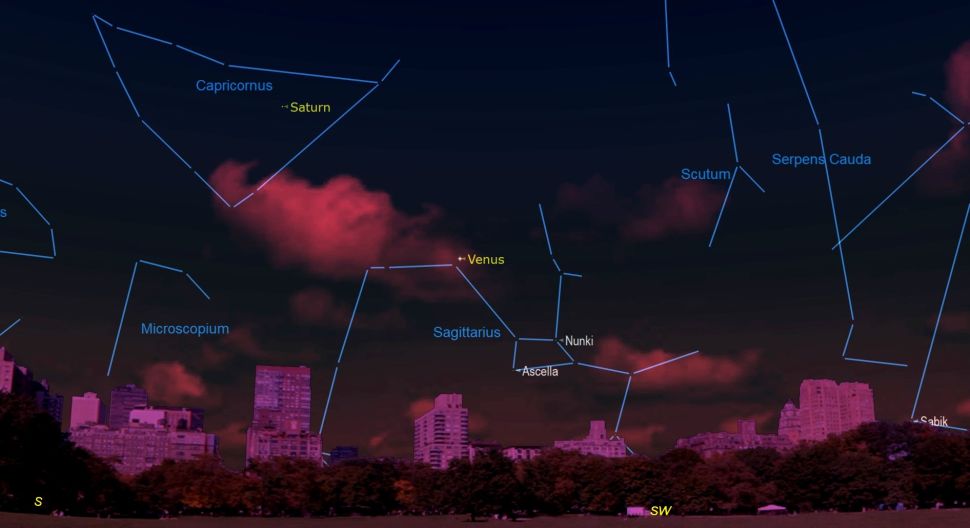If you can stand the cold, December could be the best month of the year for stargazing. We better start with the planet Venus, because it won’t be back in the evening sky until December 2022.
Get out of bed early (3:30am – 5:30am) on the mornings around Thursday, December 9 to see Comet C/2021 A1 (Leonard), a new comet discovered in January of this year. It is located one-third of the way up the eastern sky, near the circle of stars that form the head of Serpens Caput (the Snake’s Head). You may need binoculars for a good view.
After enjoying a December sunset, turn around and face east to take in what S&T columnist Fred Schaaf calls a “tower of brilliance” that starts near the horizon and climbs all the way to overhead. Start low down by finding Orion. To its left are the twins of Gemini, anchored by the stars Castor and, below it, slightly brighter Pollux. That’s the general area from which the Geminid meteors will seem to originate as they zip across the sky.
The Geminids peak on the night of Monday, Dec. 13 into the early hours of Tuesday, Dec. 14, but it is not just the onslaught of meteors that make this event so popular. This is one of the few annual meteor showers that is active in the earlier evening hours, making it great for younger stargazers. Best time to view Geminids may be after the moon sets around 2am. Lie flat on your back with your feet facing south and look up, taking in as much of the sky as possible. After about 30 minutes in the dark, your eyes will adapt and you will begin to see meteors.
Venus, Saturn and Jupiter will be visible after sunset in the southwestern sky and will all appear bright enough to see without the help of a telescope. Saturn is the dimmest of the three and will be sandwiched between Jupiter and Venus. Between Dec. 6 and Dec. 9, the crescent moon will appear close to the planets, but on Dec. 10, it will align almost perfectly with the planets not long after nightfall.
Possibly the best day of the year for skywatchers is the winter solstice, which occurs at 10:59 a.m. EST on Tuesday, Dec. 21. The longest night of the year. A great Christmas gift for the stargazer on your list is their very own star from Name a Star.


